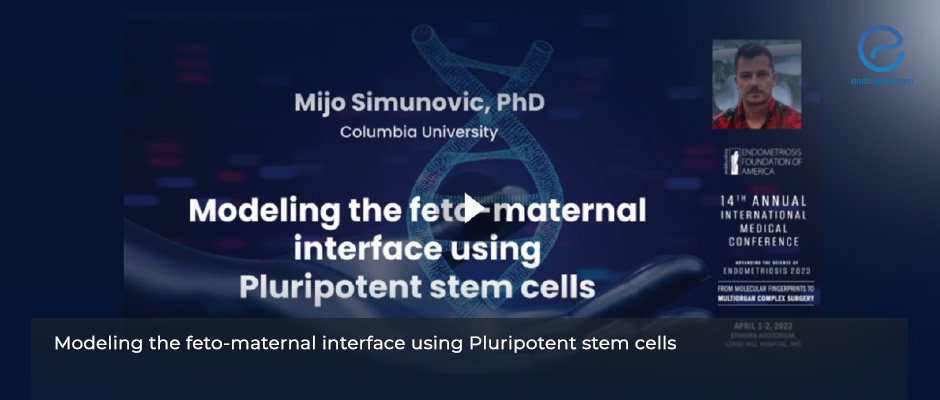Modeling the feto-maternal interface using pluripotent stem cells
May 11, 2023
In the future, the models could be used to assess the effect of endometriosis on implantation.
Key Points
Highlights:
- Researchers from Columbia University led by Dr. Mijo Simunovic developed a model embryo that can help us better understand early human development as well as the interaction between the developing embryo and the endometrium.
- The findings were presented at the Annual International Medical Conference of the Endometriosis Foundation of America held in New York on April 1-2, 2023.
Importance:
- This model could one day be used to phenocopy endometriosis and how the disease may affect the implantation of the human embryo.
What’s done here:
- Stem cells were used to create models of embryos in the laboratory and analyzed their morphology and behavior.
Key results:
- The researchers first created cells making up the embryo itself as well as the extra-embryonic tissues that will give rise to the placenta.
- They then recreated the model embryo by combining these three sets of cells.
- They showed that the model embryo looks and behaves like a real human embryo.
- Finally, they created 3-D molds that mimic the signaling microenvironment of the endometrium.
Lay Summary
Researchers from Columbia University led by Dr. Mijo Simunovic created a model using which they can study the relationship between the developing human embryo and the endometrium. The findings were presented at the Annual International Medical Conference of the Endometriosis Foundation of America held in New York on April 1-2, 2023.
The new model can not only help answer some fundamental biological questions about embryonic development but could one day even be used to understand diseases such as endometriosis.
Dr. Simunovic and his team first used stem cells to recreate the elements of the early human embryo, which are the epiblast, the trophoblast, and the hypoblast, which give rise to the placenta. Then using these 3 components, the team managed to “rebuild an embryo”.
The researchers first created the epiblast from the stem cells, which they have shown mimics the morphology and tissue polarity of a Day 10 embryo. They then managed to differentiate stem cells into becoming trophoblast cells and hypoblast cells. They confirmed the identity of these cells using RNA expression analyses and comparing them to real embryos.
The researchers then put together these 3 types of cells to create an embryo model that looks like a Day 10 real human embryo.
Next, the researchers tested whether their model embryo behaves like a real human embryo. Like real human embryos, the model embryos could not only attach in vitro but also break symmetry, which is the beginning of gastrulation, the researchers showed.
Because they are mainly interested in the placental-endometrial boundary the researchers analyzed the trophoblast of their model embryo more closely and showed, using different markers, a sub-differentiation in the trophoblast confirming the developmental potential of their models.
Finally, Dr. Simunovic and his team showed how they developed a complete physio-mimetic model that could mimic the signaling microenvironments of the endometrium in a 3D-printed mold.
In the future, the model embryos could be applied to these molds to better understand the interaction between the developing embryo and the endometrium. One day, it could even be possible to mimic the hormonal cycle in a dynamic way in these molds and phenocopy endometriosis, according to Dr. Simunovic, so that we can start understanding the effect of the disease on implantation.
Research Source: Modeling the feto-maternal interface using pluripotent stem cells
implantation model embryo endometrium

